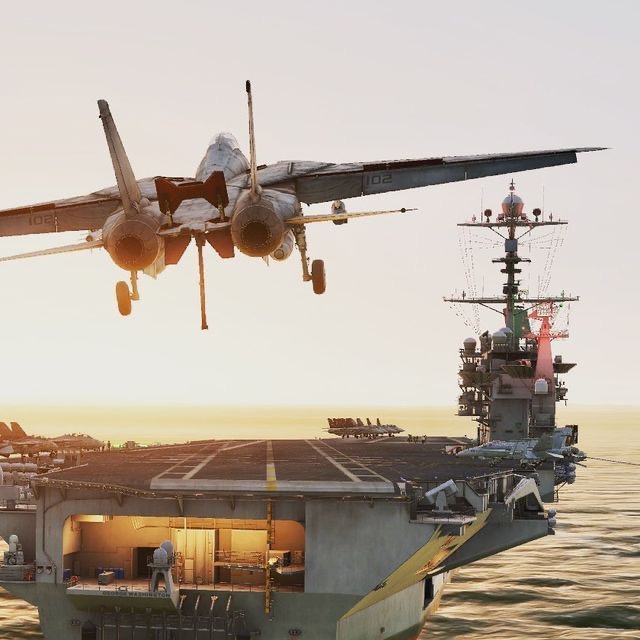
The deck lights of the carrier sliced through the rain, glowing against the dark, rolling sea. It was well past midnight when Lieutenant Laupaul, call sign Latenight_Wing, lined up his F-14B Tomcat for final approach. The rough weather carrier operation training had been intense all day, but this final trap—landing on a moving, pitching deck in high winds—would test every ounce of skill he had.
The Tomcat’s engines roared as Laupaul fought the turbulence. The rain hit the canopy like shards of glass, and visibility dropped to almost nothing. Below him, the carrier’s deck rose and fell with the swells, its arresting wires glistening under the deck lights. Over the radio, the Landing Signal Officer’s voice cut through the static: “Call the ball.”
“Tomcat two-one, ball, three-point-eight.” Laupaul’s reply was calm, his voice steady despite the adrenaline coursing through him. It was his seventh trap of the day, but this one felt different. The wind gusted hard across the bow, and he could feel the jet tugging against his control inputs. Every small correction mattered. Every second counted.
The F-14B, known for its raw power and complex flight controls, wasn’t forgiving. The analog systems demanded finesse—too much throttle, and the jet would balloon; too little, and it would sink below the glide path. Laupaul’s eyes flicked between the Fresnel lens light system and his instruments, making micro-adjustments to keep the “meatball” centered. The deck crew below braced against the gusts, watching the familiar silhouette approach out of the storm.
At just under a mile, the Tomcat shuddered as a crosswind caught its left wing. Laupaul countered instinctively, rolling slightly right, holding the nose level. His Radar Intercept Officer, Lieutenant “Reed” Johnson, stayed quiet—this was the kind of moment where silence meant trust. The two had flown together for years, a tight team forged through hundreds of carrier cycles.
The sea heaved again. The carrier deck seemed to vanish into darkness, then reappeared under a wave of white spray. “Power… power… easy with it…” came the LSO’s voice, steady and measured. Laupaul eased the throttles forward just enough to stay on glide slope. The Tomcat descended through the final few hundred feet, its landing gear trembling in the wind.
Then came the moment every naval aviator knows by feel—the trap.
The instant the tailhook caught the wire, the jet slammed down and decelerated violently from 130 knots to zero in less than two seconds. The noise, the jolt, and the strain all hit at once, but Laupaul held the stick steady, keeping the nose down until the signal came to throttle back. Around him, the deck crew broke into quick, practiced motion, guiding the Tomcat clear of the landing area as another jet lined up in the storm.
It wasn’t a glamorous mission. It wasn’t combat. But for Laupaul and his F-14B, that night’s rough weather trap was as real as it gets—a reminder that naval aviation lives in the space between precision and chaos. As the engines wound down and the rain drummed on the fuselage, he exhaled for the first time in what felt like minutes. Another safe landing. Another lesson learned at sea.


